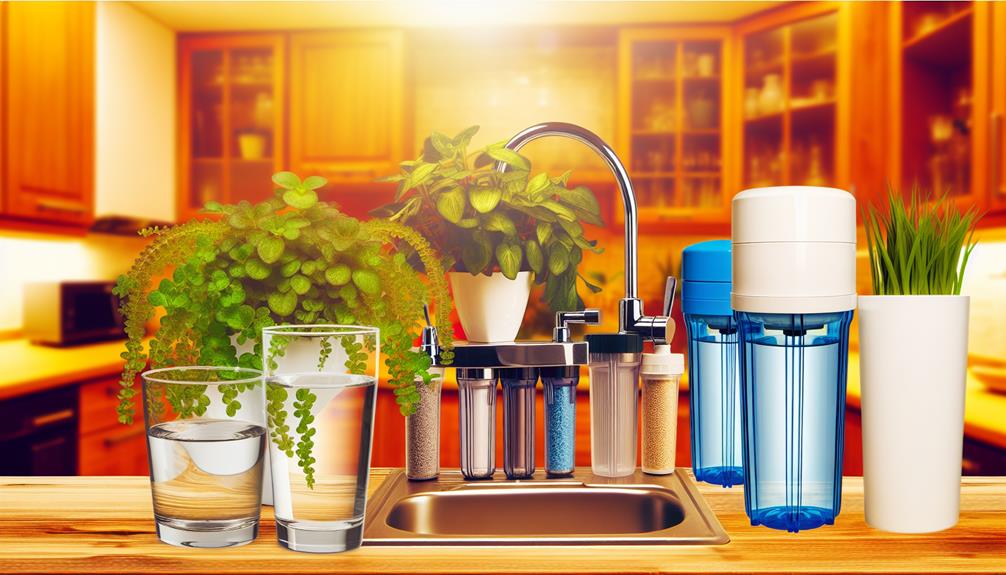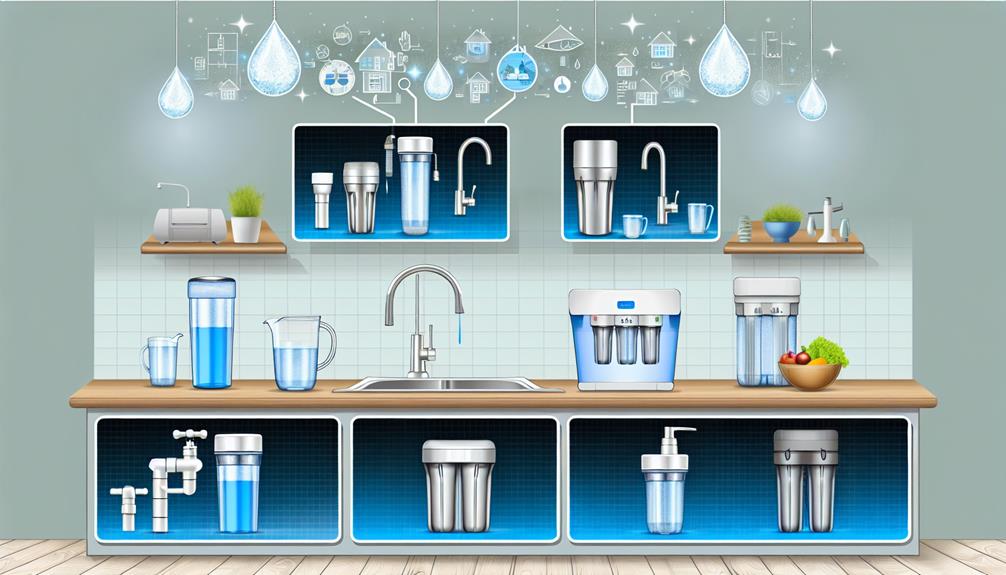When it comes to ensuring the vitality of your water supply, the myriad of choices in water purifiers can leave you feeling a bit lost at sea.
You're in pursuit of a system that not only clears the water of impurities but also aligns with your household's specific requirements. It's about balancing the effectiveness of different filtration technologies with the practicalities of installation and upkeep.
As you weigh the pros and cons of various models, consider the importance of certified standards that could make all the difference in the purity of your water. In the following sections, you'll find the crucial aspects that'll guide you to a decision that best suits your needs, encompassing everything from understanding the nitty-gritty of contaminants to the long-term benefits of each option.
Why settle for anything less than the ideal purifier that meets both your quality concerns and lifestyle demands?
Assessing Water Quality Needs
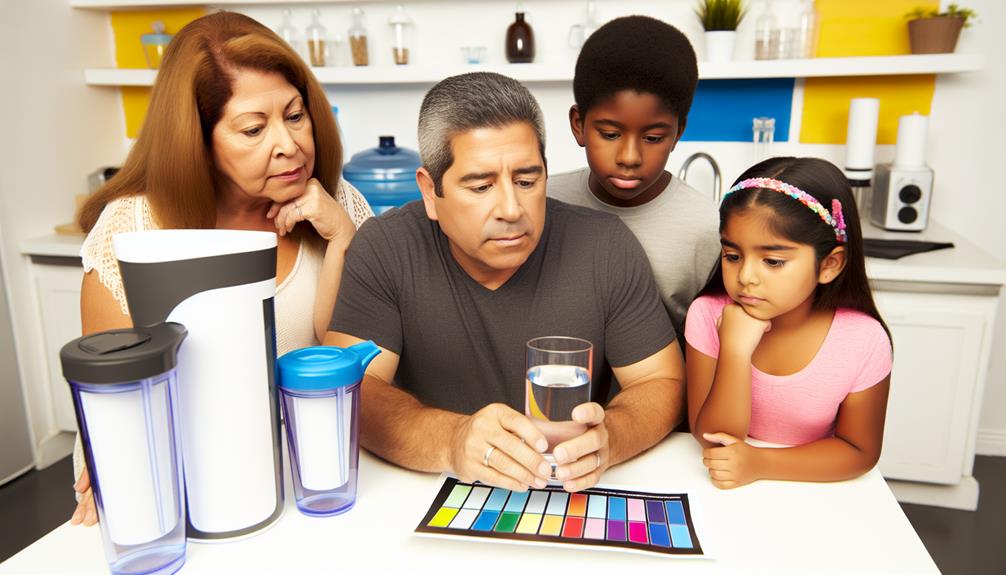
Before selecting a water purifier, you must first evaluate the specific contaminants present in your water supply to determine which filtration technology best suits your needs. It's crucial to conduct a thorough source analysis to understand the contaminant types you're dealing with. This evaluation involves testing for physical, chemical, biological, and radiological substances that could pose health risks or affect the water's taste, odor, and color.
Physical contaminants primarily include sediment or organic material suspended in the water from soil erosion. Chemical contaminants encompass a wide range of elements and compounds, such as nitrogen, bleach, salts, pesticides, metals, toxins produced by bacteria, and human or animal drugs. Biological contaminants are organisms in water. They're often referred to as microbes, including bacteria, viruses, protozoan, and parasites. Radiological contaminants consist of chemical elements with an unbalanced number of protons and neutrons resulting in unstable atoms that can emit ionizing radiation.
Once you've identified the contaminants, it's essential to match them with a purification method capable of effectively removing them. Options range from activated carbon filters, capable of removing organic compounds and chlorine, to reverse osmosis systems, which can address a broader spectrum of pollutants, including dissolved inorganics and radionuclides. Your water quality needs dictate the complexity and type of purifier you should invest in.
Understanding Filtration Methods
To effectively remove contaminants from your water, it's crucial to understand the various filtration methods available and how they operate on a technical level. The efficiency of a water purifier significantly depends on the filter material used and the contaminant types it targets.
Here are the primary methods you'll encounter:
- Mechanical Filtration: This process involves a physical barrier, typically a fine mesh or a membrane, that removes particles based on size. Sediment and turbidity are typically addressed through this method, but it doesn't remove chemical contaminants or microorganisms.
- Activated Carbon Filtration: Utilizing adsorption, activated carbon filters are effective at reducing many organic compounds, including chlorine and its by-products, as well as some heavy metals. However, they aren't as effective against inorganic pollutants or microorganisms.
- Reverse Osmosis (RO): RO systems push water through a semi-permeable membrane, removing a broad spectrum of contaminants, including bacteria, viruses, and dissolved solids. While highly efficient, they require significant water pressure and produce wastewater.
Each filtration method has its specific applications and limitations. Assess the filter material for its pore size and contaminant removal efficacy. Moreover, consider combining methods for comprehensive water purification to target a wider range of contaminant types.
Comparing Purifier Capacities
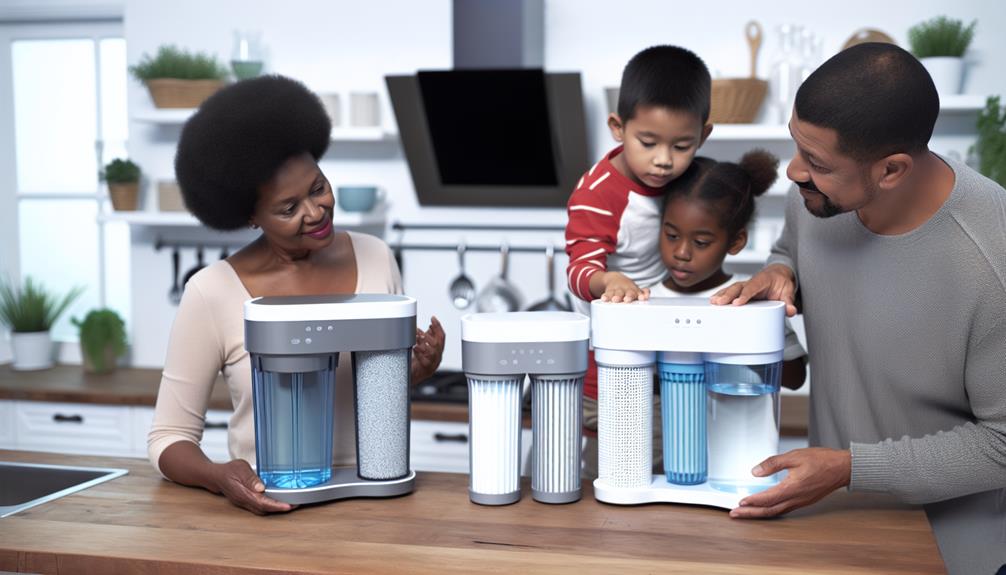
When evaluating water purifiers, it's essential to compare their capacities, as this dictates the volume of water they can effectively process within a given timeframe. This aspect is particularly crucial for ensuring a steady supply of purified water that aligns with your household's demands. Purifier placement can influence the required capacity; for instance, a central system demands a higher capacity compared to a point-of-use device.
Budget considerations play a significant role in this decision. Higher capacity purifiers may carry a steeper price tag, but they also offer the advantage of servicing larger volumes, which can be cost-effective over time. It's important to balance initial investment against long-term benefits.
The following table highlights the emotional impact of choosing the right water purifier capacity:
| Capacity Range (Liters per day) | Emotional Benefit |
|---|---|
| Under 30 L | Anxiety over insufficient supply |
| 30-80 L | Comfort for small family needs |
| 80-200 L | Assurance for medium family usage |
| Over 200 L | Confidence in meeting high demands |
Selecting a water purifier with an appropriate capacity is a technical decision that requires careful analysis. You must consider daily consumption patterns and peak usage times to ensure uninterrupted access to clean water.
Evaluating Maintenance Requirements
Having established the importance of purifier capacity, let's now examine the maintenance requirements that are crucial for sustaining your water purifier's performance and longevity.
The upkeep of a water purifier isn't merely about regular cleaning; it necessitates a deeper understanding of its components and their respective service life.
Here are key considerations to keep in mind:
- Filter Replacement Indicators: Modern purifiers are often equipped with indicators that alert you when it's time to replace filters. This feature is invaluable for ensuring that your system operates at optimal efficiency and that water quality isn't compromised due to overdue filter changes.
- Warranty Coverage: It's critical to review the warranty coverage of your purifier. A comprehensive warranty can cover the cost of replacement parts and possibly even labor, thus reducing your out-of-pocket expenses for maintenance over the purifier's lifespan.
- Service Intervals: Analyze the recommended service intervals. Some systems may require more frequent maintenance due to the complexity of their filtration processes or the quality of water they treat.
Reviewing Certifications and Standards
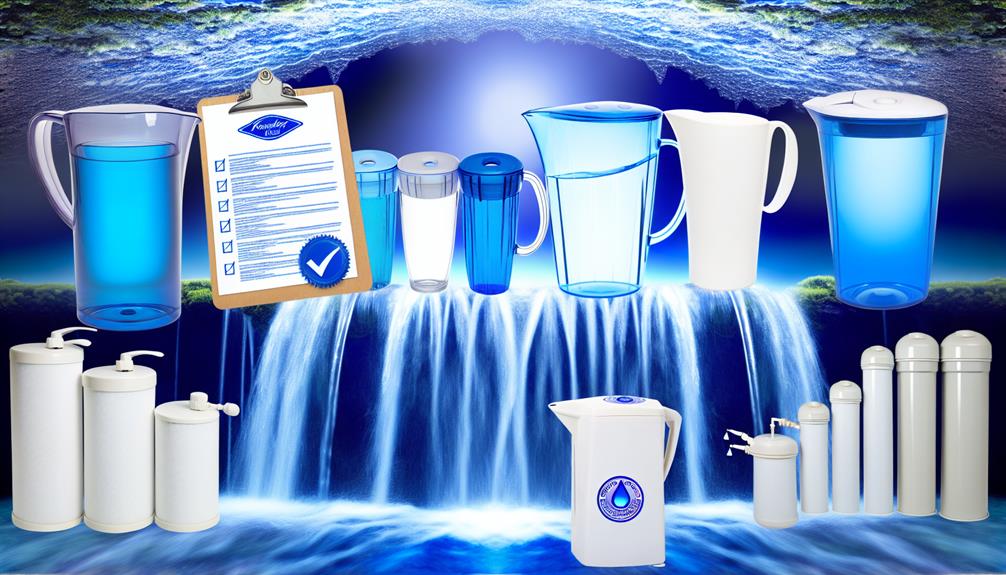
Why should you pay attention to certifications and standards when selecting a water purifier? Certification bodies set benchmarks that ensure the safety, reliability, and efficiency of water purification systems. They serve as impartial entities that validate whether a purifier meets specific performance criteria. This is crucial because it's not just about the filtration technology; it's the assurance that the technology adheres to established health and operational standards.
Standard relevance can't be overstated. It provides a technical foundation that supports your decision-making process. For instance, standards like NSF/ANSI 53 for health effects and NSF/ANSI 42 for aesthetic effects are widely recognized benchmarks within the industry. A purifier bearing these certifications has undergone rigorous testing to confirm that it effectively reduces specific contaminants like lead, chlorine, and other harmful substances from your water.
Moreover, evaluating the certification claims on water purifiers involves analyzing the scope of the standard referenced. Not all certifications are equal; some target a broad spectrum of contaminants, while others may focus on a single element. Therefore, you must dissect these details to align the purifier's performance with your specific water quality concerns.
In essence, certifications and standards are your best tools for assessing the credibility and capability of a water purifier before you commit to a purchase.
Conclusion
In conclusion, when choosing a water purifier, there are several factors to consider.
Firstly, it is important to understand your specific water quality needs. Different filtration methods address different contaminants, so it is crucial to delve into the various options available and choose one that suits your requirements.
Secondly, consider the capacity of the purifier. Assess the amount of water your household consumes and choose a purifier that can meet that demand.
Thirdly, do not overlook the maintenance demands of the purifier. Some models may require frequent servicing, which could be inconvenient and costly in the long run.
Lastly, certifications are an important aspect to consider. Look for purifiers that meet the necessary quality standards. These certifications provide assurance that the purifier is effective and reliable.
By taking a meticulous approach and considering these factors, you can ensure that you invest in a water purifier that delivers safe, clean water with optimal efficiency.
